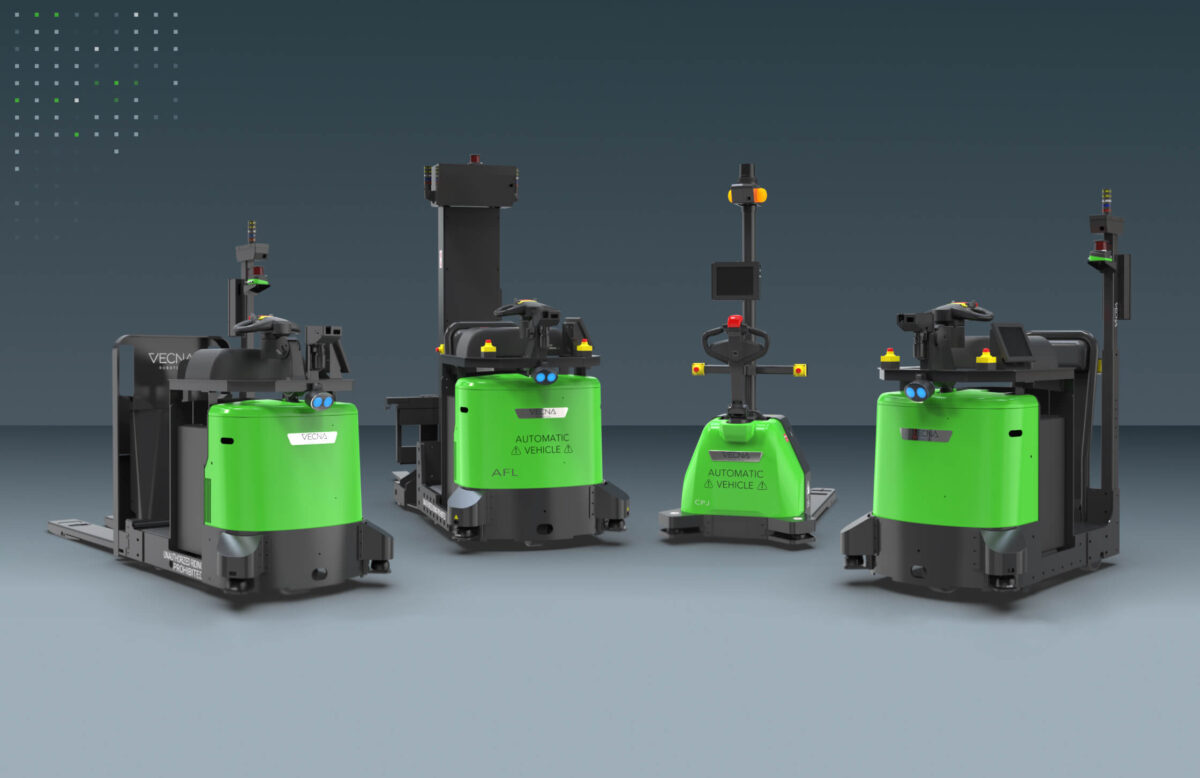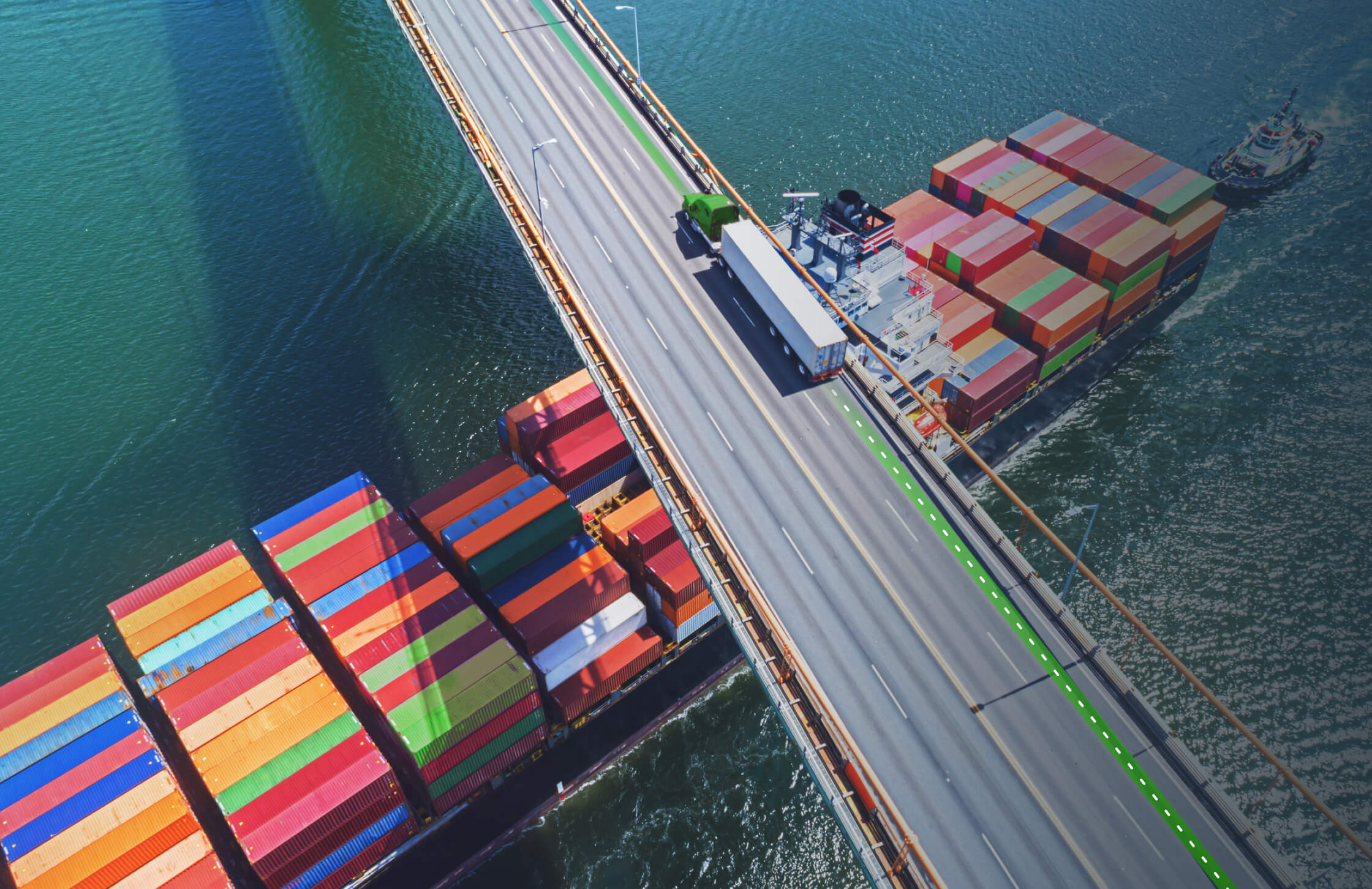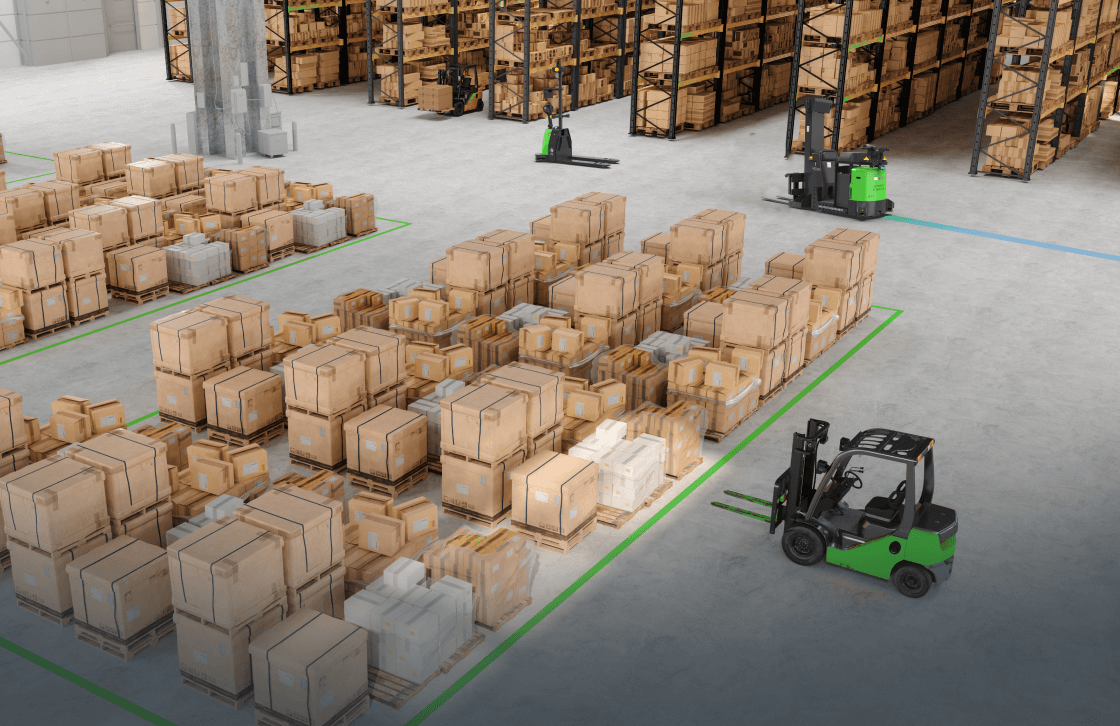The global landscape of trade and commerce has been rapidly evolving, fueled by technological advancements, shifting consumer behaviors, and the unprecedented challenges brought about by global events. The realm of logistics, which stands at the crossroads of this evolution, is uniquely positioned to experience transformative changes. The digital age has ushered in an era where both businesses and consumers are interconnected more than ever, demanding transparency, efficiency, and agility in the supply chain. As sustainability concerns rise and the push towards greener practices becomes paramount, the logistics industry must adapt to remain relevant and competitive.
This backdrop sets the stage for the key logistics trends of 2023. From embracing cutting-edge technologies to reimagining traditional processes, the logistics sector is gearing up for a year of innovation and optimization. As organizations align their strategies with these trends, they not only position themselves for immediate success but also lay the foundation for sustainable growth in the years ahead. So, without further ado, let’s dive into the trends that will define the logistics horizon in 2023.
1. Robotics
Often used in consumer goods and e-commerce warehouses, AMRs (autonomous mobile robots) take on monotonous and labor-intensive tasks, including heavy lifting, and the staff workload accordingly reduces
Robots are ideally suited to gathering goods for customer orders and moving heavy loads through a warehouse. The robots calculate the best routes for transporting goods, prepare the orders and take the goods to the handover point; then another robot takes over. AMRs avoid collisions with other robots, objects, or humans via sensors. Unlike AGV technology, which has been around for decades, modern AMRs have finely tuned navigation systems that can intelligently plan routes, avoid obstacles, and adhere to the most rigorous safety standards with little-to-no intervention.
Robots are ideal for transporting pallets and heavier loads too! Standard forklift trucks are unwieldy and dangerous and require a staff member to operate them. In contrast, an AMR can move heavy palletized goods throughout a warehouse and load and unload goods without supervision. Examples include the autonomous forklift and the co-bot pallet jack.

Demand for AMRs will continue to grow, as will their capabilities. Training is not required to improve AMR skills — a simple software upgrade will suffice.
2023 will see the emergence of more clearly defined end-to-end workflows for AMR technologies that could be all-in-one priced solutions tuned for very specific types of automated work.
2. Cloud-based automation management systems
Rather than businesses using on-prem servers for their warehouse management systems (WMSs), they are increasingly opting for robust cloud-based WMS services, which reduce infrastructure, saving on cost and labor.
Warehouse Execution Systems (WESs) are taking warehouse management to the next level. They usually work alongside WMSs, enhancing pre-existing systems. More adaptable and versatile than a WMS, A WES verifies data and automates tasks that are difficult for staff to handle.
Transportation management systems (TMSs) are also growing in popularity. A TMS delivers real-time delivery tracking, lower freight costs, improved transparency, and higher customer satisfaction.
3. Sustainability
Of all the logistics trends, sustainability will dominate logistics more than any other trend in 2023. The good news is that implementing the automated systems described in this article will positively impact businesses striving to become more sustainable.
Companies are now adopting green fuels, including bio-LNG (liquefied natural gas), which produces up to 85% fewer CO2 emissions than gasoline. Standard LNG also has a lower carbon footprint than gasoline, which is crucial because if demand for bio-LNG becomes too great, supplies may run out.
Another option is CNG: compressed natural gas. CNG produces between 20 and 55 percent less CO2 than gasoline. There is a comprehensive network of gas stations in Europe ready to serve new users of green fuels; countries outside Europe have been slower to make green fuels widely available.
4. Big data
Big data is becoming increasingly vital in the logistics industry. New software and hardware are making collection and exchange easier. With the potential for further supply chain disruptions in the future, the need for clear data has never been more essential.
Big data improves warehouse robotics by flagging up maintenance issues, improving predictive models, and optimizing inventory management. Warehouse managers working with big data analytics can make informed operational decisions, reduce costs, and improve warehouse operations and safety conditions.
5. Multichannel logistics and last mile delivery efficiency
Events during the Covid era have shown how easily supply chains can collapse — the Suez Canal obstruction and the attendant maritime transport disruption is a notable example. Multichannel logistics allows companies to switch to alternative transport modes; for example, an alternative to sea transport could be air transport.
Businesses will also benefit from opportunities for business growth with the increased flexibility and agility of a multichannel-enabled supply chain.
As a result of growing customer demand for faster deliveries, the WEF predicts that carbon emissions will increase by 30% by 2030 and last-mile delivery will grow by 78%.
Improving the efficiency of last-mile deliveries is an offshoot of a multichannel-enabled warehouse. About 90% of warehouses still use time-consuming and inefficient traditional manual processes. Upgrading to a WMS means fewer mistakes and returns and fewer last-mile journeys.
90% of warehouses still use time-consuming and inefficient traditional manual processes
Companies are now introducing sustainable options for customer deliveries, which invariably result in slower deliveries. One positive byproduct for businesses is that there will be less pressure to get orders to customers fast with sustainable delivery options, and the impact of last-mile deliveries on cost and the environment will decrease.
Further afield: logistics trends beyond 2023
As we look beyond 2023, the following technologies will emerge as major trends shaping the future of logistics transformation:
- Autonomous vehicles and drones: With concerns related to driver shortages, rising labor costs, and the increasing demand for faster deliveries, the emphasis on automation has never been higher. Self-driving vehicles and drones, once thought of as mere science fiction, are now at the forefront of this transformation, promising to reshape the logistics landscape in profound ways.
As urban environments become more congested, and as consumers’ expectations for same-day or even same-hour deliveries intensify, the limitations of traditional logistics solutions become evident. In contrast, autonomous vehicles, equipped with advanced sensors and AI-driven algorithms, can operate round the clock, navigating complex routes with precision, and ensuring timely deliveries. Drones, with their ability to bypass road traffic altogether, present an agile solution for last-mile deliveries, especially in hard-to-reach areas.
The environmental implications are also significant. Electrically powered drones and self-driving vehicles can substantially reduce the carbon footprint of logistics operations, aligning with global efforts toward a more sustainable future. The increased adoption of these technologies is not just a testament to their efficiency but also to the industry’s commitment to innovation and sustainability. - Internet of Things (IoT) and real-time tracking: The digital revolution has ushered in the era of the Internet of Things (IoT), a transformative force in the world of logistics. Imagine a world where every package, pallet, and transport vehicle communicates in real-time, providing a constant stream of data on their location, condition, and status. This isn’t a futuristic dream but a reality facilitated by IoT.
The intricate web of interconnected devices and sensors offers unparalleled visibility into every nook and cranny of the supply chain. From the moment a product leaves a warehouse to the instant it reaches a customer’s doorstep, IoT provides a continuous feedback loop. This real-time insight is invaluable for logistics companies. For instance, if a shipment encounters unforeseen circumstances like adverse weather or traffic disruptions, immediate data from IoT devices can trigger responsive actions, such as rerouting or adjusting delivery timelines.
Beyond mere tracking, the ability to monitor the environmental conditions of sensitive shipments, like pharmaceuticals or perishables, ensures product integrity. If temperature fluctuations or other anomalies are detected, corrective actions can be swiftly initiated.
This technology also paves the way for predictive analytics. By analyzing patterns and historical data from IoT devices, logistics companies can anticipate challenges and preemptively strategize solutions. - Blockchain technology: Often dubbed the backbone of modern digital transactions, blockchain is revolutionizing the logistics industry. Essentially, it’s a digital ledger that offers a tamper-resistant record of data transactions, ensuring unparalleled transparency and trust within logistics.
Blockchain also facilitates real-time tracking, documenting every transaction and modification, verified by all parties involved. This becomes transformative in customs operations where traditional paperwork delays are replaced by swift, blockchain-verified processes. Smart contracts, deriving from blockchain, autonomously action tasks when set criteria are fulfilled, minimizing human errors. With counterfeiting rising, blockchain ensures products’ origins are traceable, reducing fake goods in legitimate supply chains. For international trade, blockchain streamlines and secures cross-border transactions.
Beyond just transactional enhancements, blockchain instills confidence in the supply chain, as stakeholders from production to consumption can trust a system fortified by accuracy and transparency. Blockchain is ushering in a logistics renaissance, emphasizing speed, trust, and reliability. - Artificial intelligence and machine learning: AI and machine learning (ML) are becoming central pillars in reshaping the logistics industry. At their core, these technologies enable systems to learn from data, identify patterns, and make decisions without human intervention. In terms of logistics, AI can predict demand, ensuring that inventories are stocked just in time, reducing holding costs and waste. Furthermore, ML algorithms can analyze traffic data, weather patterns, and other dynamic variables to dynamically optimize delivery routes, ensuring timely deliveries while minimizing fuel consumption.
Moreover, these technologies assist in predictive maintenance for logistics assets. Instead of following traditional maintenance schedules, AI can predict when a vehicle or machine is likely to break down, scheduling repairs only when needed, thus enhancing operational uptime. Customer service can also be enhanced through AI chatbots that provide real-time tracking information and handle queries 24/7. In complex supply chains, ML can sift through vast amounts of data to detect inefficiencies or bottlenecks, providing actionable insights for continuous improvement. - 3D printing: By allowing the on-site production of spare parts and components, it eliminates the traditional dependencies on extensive supply chains and centralized manufacturing hubs. As businesses recognize its potential, we’re witnessing a shift towards localized production, which means goods can be manufactured closer to the end consumer, significantly reducing transport costs and carbon footprints.
3D printing also opens the opportunity for unparalleled customization possibilities. Products can be tailored to specific customer requirements, fostering a new era of personalized consumer goods. This reduces waste as items are produced based on actual demand rather than projected estimates. In the context of sustainability, 3D printing also promotes a circular economy by facilitating the recycling of materials to create new products. Furthermore, in emergency situations or remote locations where specific components are urgently required, 3D printing emerges as a game-changer, ensuring rapid production and delivery. - Electric vehicles: The adoption of electric vehicles (EVs) in logistics represents a major stride towards sustainability in an industry once dominated by high carbon emissions. Driven by both environmental concerns and economic benefits, EVs offer reduced maintenance costs due to their simpler design.
With stricter global emissions regulations, EVs help dodge potential fines. Advances in charging infrastructure and battery technology extend their range, making them more versatile for logistics needs. Incorporating renewables like solar for EV charging further reduces a company’s carbon footprint. Internally, electric machinery, like forklifts, boosts warehouse safety through noise reduction. Overall, embracing EVs signifies the logistics sector’s commitment to a sustainable, modernized future. - Climate-controlled logistics: The surge in e-commerce has amplified the complexities of supply chain management. Climate-controlled logistics, once a niche segment, is now essential in ensuring product integrity from source to destination. As consumers become more health-conscious and globally connected, there’s a rising demand for fresh foods, pharmaceuticals, and specialty products that require specific temperature ranges during transit.
Additionally, in regions with extreme weather conditions, even electronics and cosmetics may need climate-controlled transport to prevent damage. Advanced tracking systems are also being integrated to monitor the temperature in real-time, allowing for immediate adjustments. As global markets expand and consumers’ expectations evolve, the logistics industry’s ability to maintain optimal conditions throughout transit becomes a significant differentiator, emphasizing the importance of investments in state-of-the-art climate-controlled infrastructure and technologies. - Virtual and augmented reality: VR and AR are revolutionizing the logistics industry by bridging the gap between digital and physical environments. For training, VR can simulate complex logistics scenarios, allowing workers to practice in a risk-free virtual environment. This is invaluable for roles like forklift operation or hazardous material handling, ensuring that workers are well-prepared before they engage in real-world tasks. On the customer front, AR can enhance the e-commerce shopping experience. Imagine trying on clothes virtually, or visualizing how a piece of furniture fits in your living space before making a purchase.
Within warehouses, AR-equipped glasses can assist pickers by highlighting the path to items or providing real-time inventory updates. As logistics operations become more complex, the integration of VR and AR not only enhances efficiency but also enriches interactions for both employees and customers. - Hyperloop and other high-speed transportation: The introduction of Hyperloop and similar high-speed transportation methods marks a game-changing shift in logistics, promising transit times previously deemed impossible. These systems operate by reducing air resistance, allowing pods to travel at phenomenal speeds. Consequently, goods could be moved across continents in mere hours instead of days.
Such rapid transportation can be revolutionary for perishable items or high-demand products, ensuring freshness and timely delivery. Economically, these advancements could lead to reduced inventory holding costs, as businesses might no longer need to maintain large stockpiles with the confidence of rapid replenishment. Moreover, urban centers could benefit as congestion and associated pollution decrease, with fewer trucks needed for short-haul deliveries.
From a sustainability perspective, many of these high-speed solutions are exploring renewable energy sources, aligning with global shifts towards greener transportation. As technology matures and becomes more accessible, it has the potential to reshape global trade dynamics, making distant markets more interconnected than ever. - Flexible and on-demand logistics: The rise of flexible and on-demand logistics signifies a direct response to today’s consumers who crave convenience, speed, and customization. With lifestyles becoming increasingly hectic, the traditional 9-5 delivery window is becoming obsolete. On-demand logistics services cater to this, enabling deliveries to be scheduled at non-traditional hours, such as late evenings or weekends. This personalized approach extends to real-time rescheduling, allowing recipients to adjust delivery times based on unforeseen changes in their availability.
Businesses are also leveraging data analytics to predict demand spikes and accordingly adjust their logistics capacities. This dynamic system benefits not only consumers but also retailers, as it can reduce the number of failed delivery attempts and returns. Additionally, it presents opportunities for gig economy workers, providing flexible employment options. With the integration of AI and advanced tracking systems, on-demand logistics can offer precise delivery time estimates, ensuring consumers are adequately informed and prepared. This evolution epitomizes the industry’s shift towards consumer-centric models, placing a premium on adaptability and immediacy.
Conclusion
The logistics industry continues to advance as operations leaders plan for a new era spearheaded by new practices and technologies. Despite the confusion and uncertainty of the last three years, the logistics industry is ripe for transformation and innovation. Companies that succeed in the current challenging environment will keep pace with logistics trends and embrace new and advancing technologies. Implemented correctly, those technologies will ultimately make businesses run more smoothly and profitably and will become more vital to their enduring competitiveness. In the coming years, advanced technology adoption at scale in logistics will not be optional.
Fortunately, Vecna Robotics has a wide range of pallet handling solutions that can guide your automation transformation journey right away. For more information about how you can get started, go to our From No Bot to Robot page, or contact us today to schedule a consultation with a factory automation expert.





